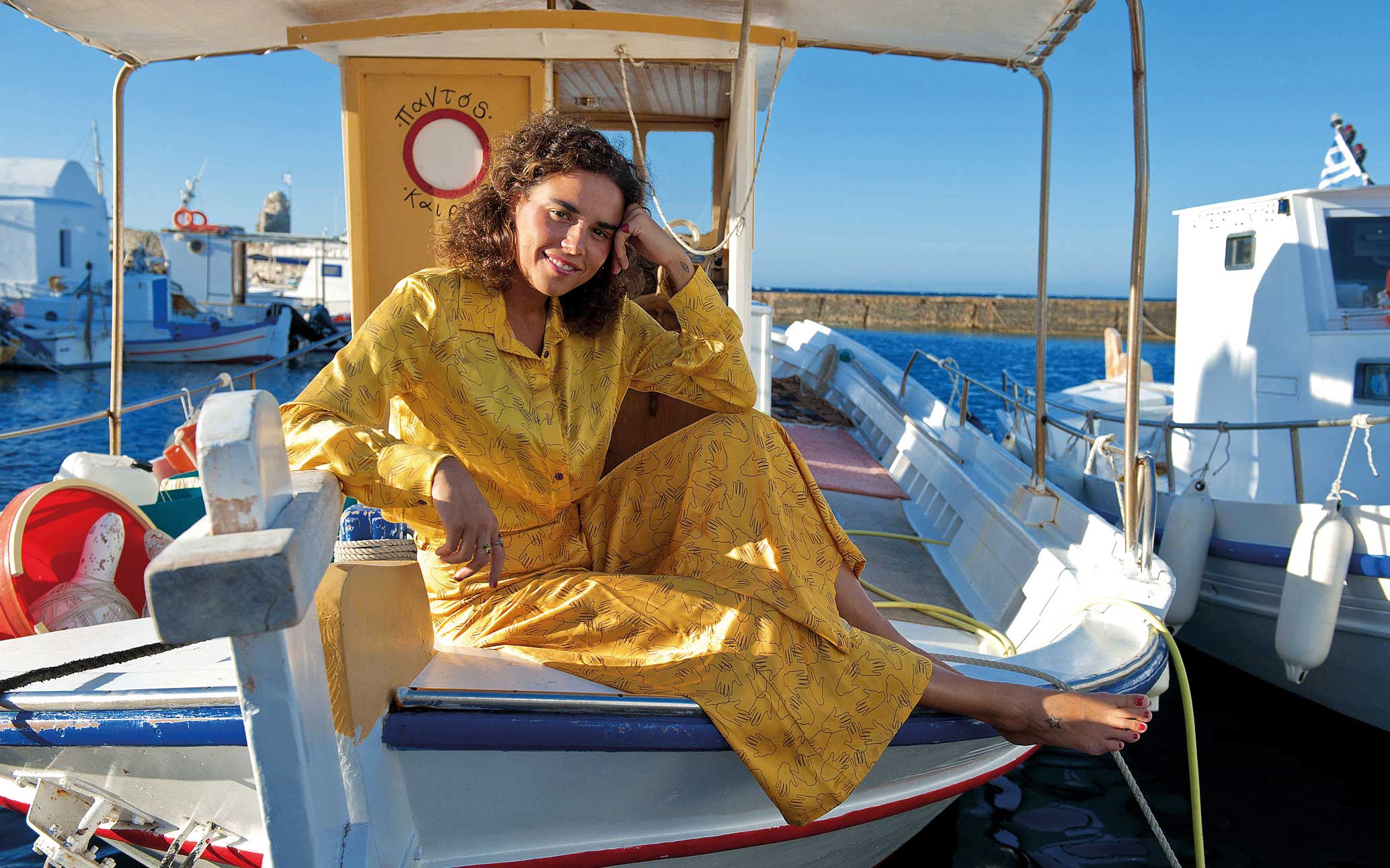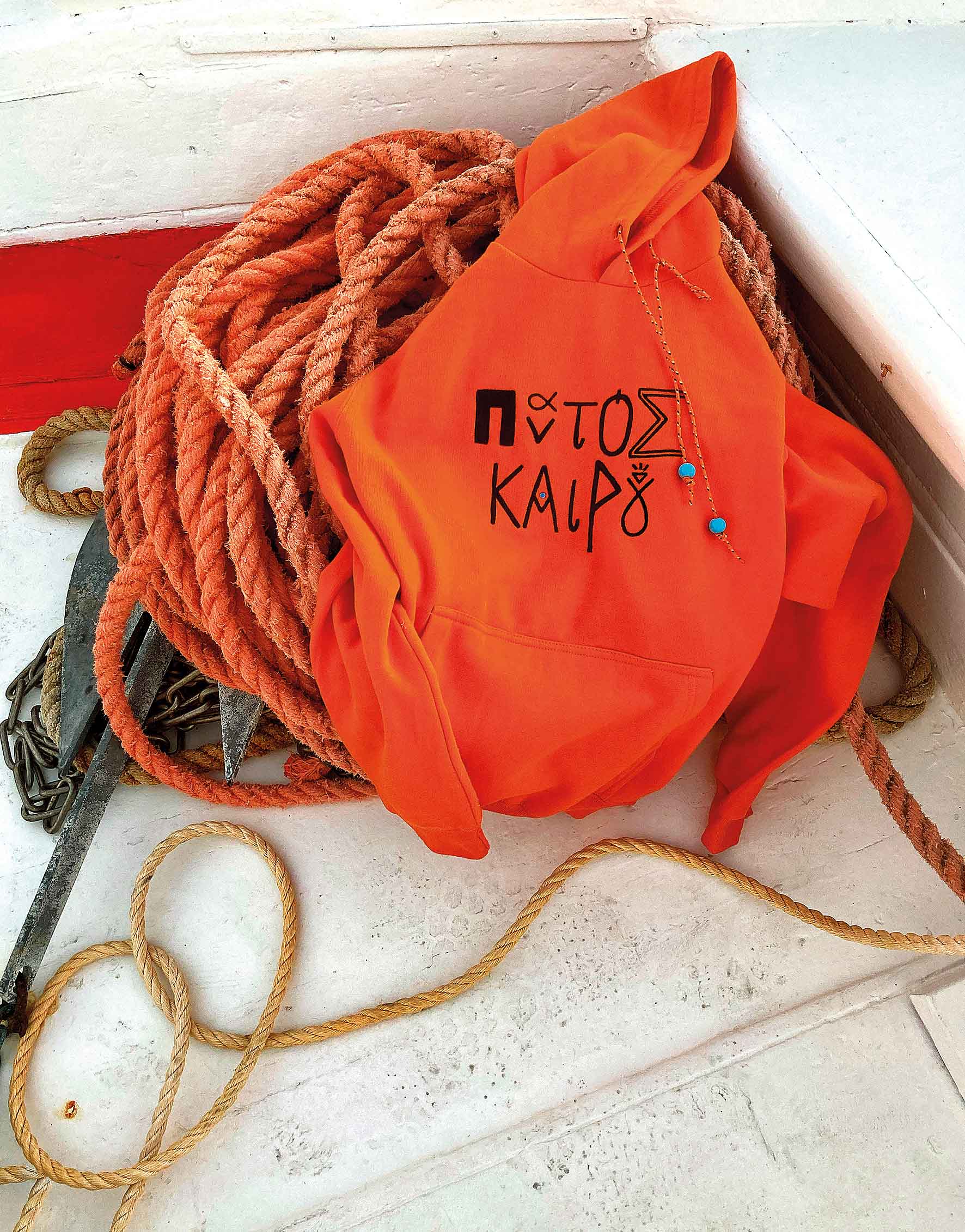Leros: The Underrated Greek Island that Has It...
Discover Leros, a hidden Greek island...

Christianna Economou.
The first time I saw little Ilias was the summer of 2017. Proud and colorful, standing at the entrance to Schinoussa harbor, welcoming visitors with an epigram painted along his body, to guide us in our holidays and in life: “all we see is the sea”. Little Ilias is an abandoned wooden boat, which sculptor Christianna Economou has brought back to life with an artistic intervention. He did not return to the sea – none of the boats included in the project “Boats that were not afraid” plays with the waves anymore, but they’re all still caressed by salty breezes, overlooking the harbors of the Lesser Cyclades and Paros.
“When I boarded the night boat in Piraeus in February of 2016 bound for Schinoussa, I was not exactly clear what I wanted to do. I had been encouraged by my teachers at St Martins to focus on what really moved me, and what I looked to for inspiration during my years of studies: the nautical tradition, and the arts that are being lost. But I did not have a fully formed idea in my head”.

Caption: Kyra-Sofia in Koufonissi.
“I just wanted to sense the atmosphere on the islands in the winter”, Christianna says. The idea of getting to know a new place provided her with her motivation to pursue the project, which was supported entirely by private funding and sponsorship. “Going to an unfamiliar place for the first time, finding the boat, negotiating with the owners, thinking about how to work on it, was all part of the magic of the venture”.
In 2017 she delivered “Capetan Giannis” to the island of Iraklia, and in 2018 she gave “Kyra-Sofia” to Koufonissi. Most of the boats – all of the traditional wooden caique type, with a variety of hulls, with sails or oars – have kept their original names, apart from one on Paros. “It was literally rotten, and the locals teased me. In the end the name “Mamouna” stuck”.
She sees Mamouna more often than the others, as she now splits her time between Naoussa on Paros, where her studio is located, and Athens.

“All weather” sweater.

Ceramic plate decorated with spiral decoration made up of words and phrases associated with the sea.
I had not considered that the slogan “all we see is the sea” could evolve into a brand. It happened purely by chance. When I was inaugurating Kyra-Sofia in Koufonissi I thought of printing a few t-shirts for me and my friends to wear to welcome people. They had the phrase “all weather” printed on them, like my boats say on one side. They sold like hot cakes”.
She explains that she is not interested in the idea of folklore, her own intention is to approach tradition in a more playful way. Ceramics, t-shirts, sweaters, bags, charms, wood carvings, miniature caique ornaments, with phrases embroidered or painted on them with references to the life of the sea, nautical commands, casting out evil, island festivals – everything is made by hand and takes time, she tells me. “More than the objects themselves, I am motivated by the process of making them. I like going to my workshop late at night, when the island calms down, or very early in the morning, before the day has issued its commands, to look again, made additions or corrections, to think up new ideas”.

Carved wooden "kaïki" ornaments.

Christianna at work.
Looking back on her childhood, she recalls how she was always destined to get involved with the sea. “I was always charmed by the blistered paint on old boats, strings, nets, buoys and anchors. As a small girl I loved the boatyard on Spetses. Our vacation home was in the old harbor, and this is where I would hide”. This is where she will be returning this summer, to deliver another boat, this time in coordination with the Municipality of Spetses for the celebration of the 200-year anniversary of the Greek Revolution.
“I have reason to remove myself from the Cyclades now”, she laughs. Once she completes a caique destined for Amorgos, which she had to abandon in the middle of the pandemic, the project will be completed. “I couldn’t make a boat for every island in Greece”, she admits. “I need to maintain them all every year. I visit them and admire them. But, after all, my worry that my own children wouldn’t associate the Aegean with a traditional wooden boat has been allayed. They are there in the ports, shouting out their history. It’s time to move on now”.
Showroom: Naoussa Ring Road, Paros, Monday-Saturday 10:00-14:00.
www.allweseeisthesea.com
Discover Leros, a hidden Greek island...
Opening June 15 on the sunlit...
Igor Borisov turned Kimolos into his...
Discover hidden beaches, authentic tavernas, ancient...